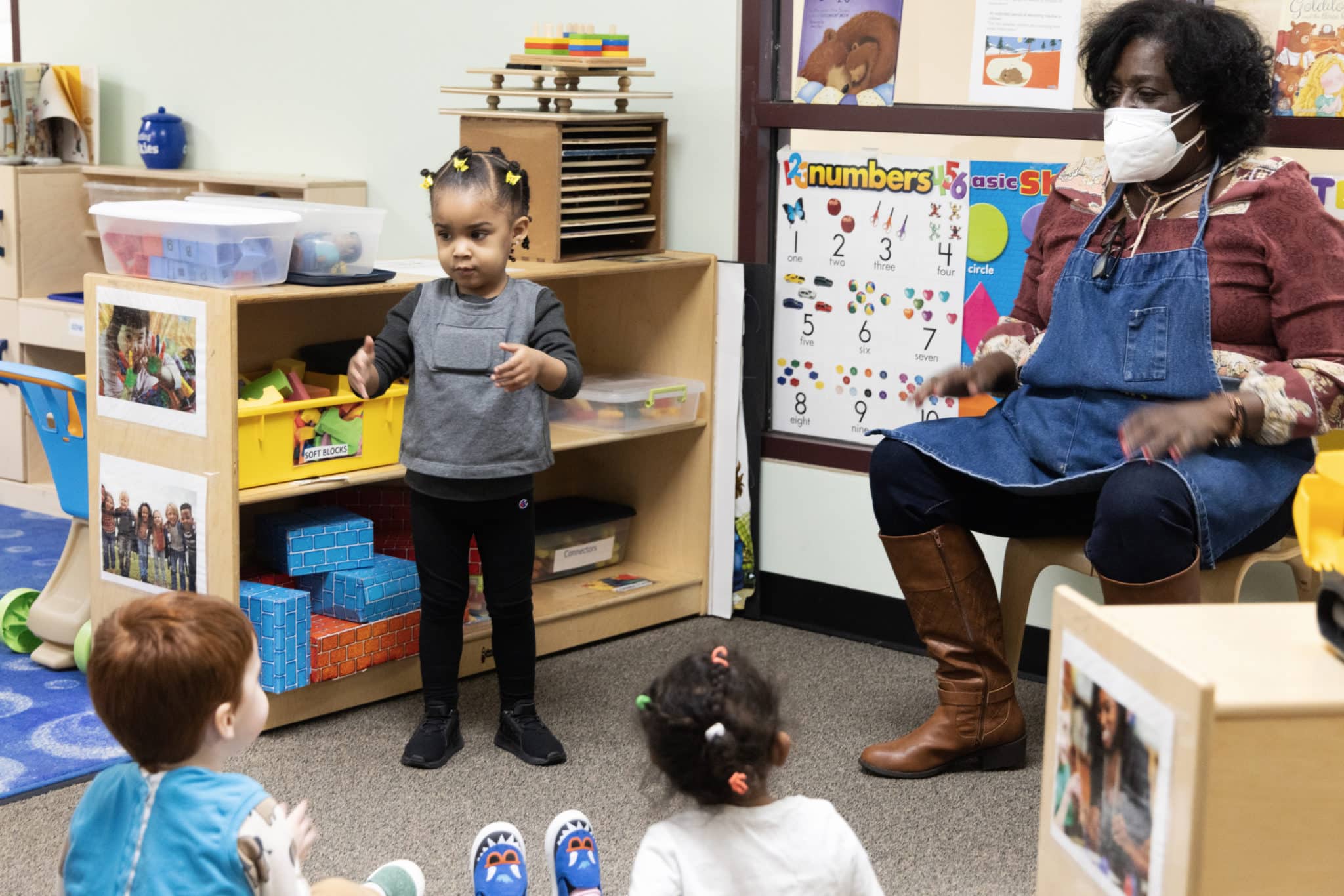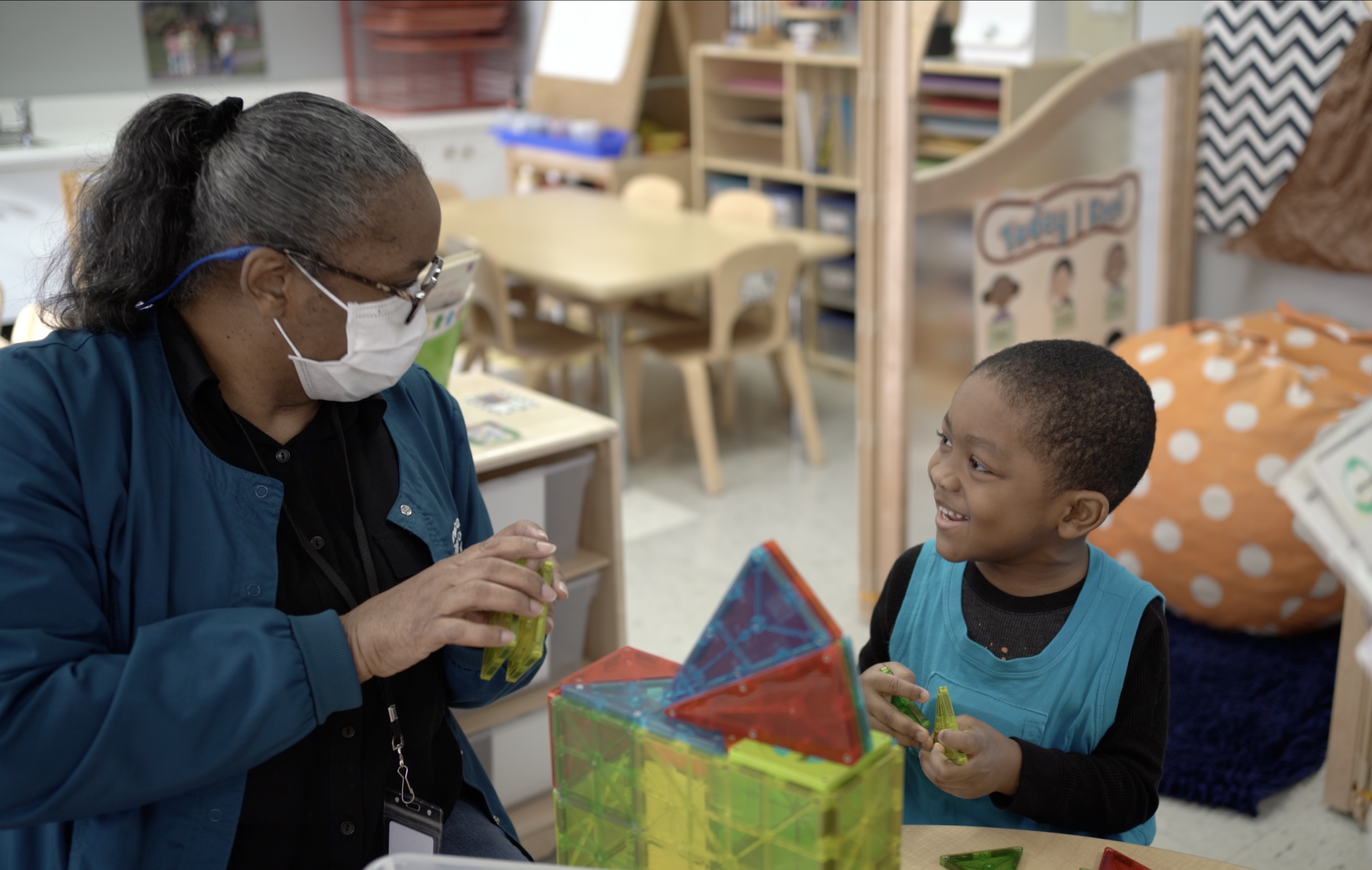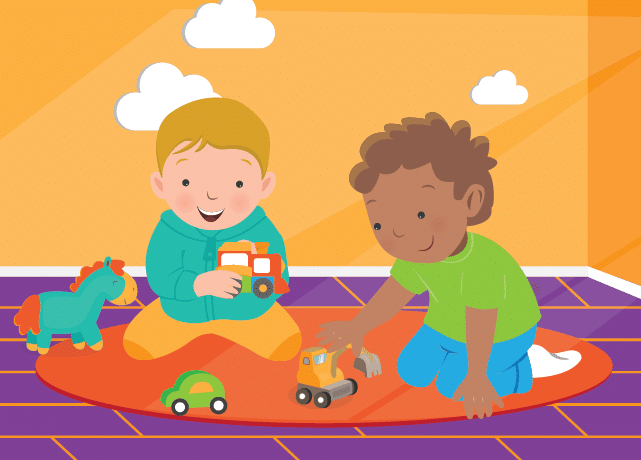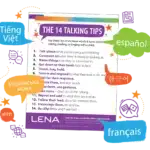“Environment is the third teacher.”
A lot of early childhood educators will recognize that quote. It’s often seen as the basis of the Reggio Emilia approach, and it translates just as well to other program models and philosophies.
What does it mean? In part, it means recognizing that the early learning environment shapes a child’s entire learning journey. An early education classroom’s materials, and how those materials are arranged and presented, have a huge impact on the learning process. That’s true both for you the teacher and for the children in your care.
Of course, environment doesn’t do it alone. How a child interacts with their early learning environment is one thing, but how they interact with their teachers is another altogether. The value of teacher-child interaction simply cannot be overstated. At LENA, we have a name for those interactions: conversational turns. The science makes it clear: Children benefit from experiencing lots of conversational turns.
So let’s put these two ideas together. If environment is the third teacher, and if conversational turns are critical to a child’s development, how can you create an early education classroom environment that helps create lots and lots of conversational turns? How can you create an environment where it’s easy to use the 14 Talking Tips, which are research-based strategies for increasing early interaction.
“If environment is the third teacher,” says Laura Camp, Manager of Partner Success at LENA, “what you choose to place there, how you present it, and how you arrange the overall environment can really increase opportunities for interaction.”
[callout]
Overall Arrangement of the Early Education Classroom
How you arrange your early childhood classroom dictates how a child will interact and move through the space. As an early childhood educator, you probably already know the need to allow more space for noisy or active play and separate the loud and quiet areas in your room. It’s important to create areas where peer-to-peer and adult-child interaction can take place comfortably. In every room’s main area, think about how an adult fits into that space. Is there space large enough for an adult to be a part of that area and that conversation?

Many teachers plan out high-activity areas, such as blocks or dramatic play, with children in mind. These types of play are seen as child-driven, but there is so much an adult can bring to the conversation. There just has to be enough room! Increase interactions in these spaces by providing an unobstructed place for an adult to sit and support social interactions between peers.
However, in certain areas, limiting space for children can improve their overall learning experience. Creating spaces that are big enough for only a few children at a time helps support quality interactions within that space. For example, quiet activities, such as reading a book or doing a puzzle, are a great time to focus on interactive talk. “Reading in our loft area to the kids and talking back and forth with them about the book is a special way to get one-on-one time,” says Linda, a teacher at Mini University in Miami, Ohio. To actively engage children in all spaces of the room, remember that an adult must be able to be both mindful and present within that space.
- Think about Talking Tip #3: Name things that they’re interested in. What better way to encourage conversational turns than to display familiar and personal items and children’s eye level?! “I see you looking at this picture of your family. Who do you see — ¿Tu madre? ¿Papá? Who else do you see?”
- And think about Talking Tip #5: Touch, hug, hold. Create spaces where an adult and child can comfortably spend time together: large pillows in a book corner, or a comfortable chair for bottle-feeding infants. “Come sit with me in the reading area. We can cuddle up with a good book. Which one are you going to choose?”
Materials You Choose
The materials you choose for your classroom can have a big impact on children’s learning. The best toys should be able to facilitate multiple play experiences. Using open-ended materials sparks a child’s curiosity, creativity, and imagination. It’s important to be intentional about the items you’re selecting. Every item should have a purpose and enhance learning. It is important to embed these materials in a meaningful way so children make connections to their world/environment without even realizing it. For example, placing a farm book or poster near a display of farm animals creates context for learning about the topic.
- Think about Talking Tip #1: Talk about what you’re doing and thinking. When introducing new materials, explore items together. Talk about what you are doing and thinking while showing children different ways to play. “Look at these new blocks! Can the blue one fit inside the red one? No, it was too big. I’m going to try the yellow one. I did it!”
- And think about Talking Tip #7: Wait for their response. Find the “just right” number of materials for a certain area. Children are more likely to engage in meaningful interactions if there are just enough materials to use together. Give children time to explore (and explain) how they use the materials. “I see you sharing the sand table toys with your friend. What are you two creating?”
Incorporating LENA Lakeshore toys can also be an excellent choice for enhancing the learning environment. These toys are designed to help increase conversational turns with infants, toddlers, and preschool-aged children. Four kits are available to provide age-appropriate materials that align with the topics teachers explore during LENA Grow and beyond. These kits are not just fun, but also valuable tools for fostering language-rich interactions between children and adults.
How You Present the Materials
Presenting materials correctly is beneficial for engagement and accessibility. To make the space inviting, put visuals at children’s eye level. Add in low seating for adults and children. When organizing your materials, place them on low open shelves.
Mini University teacher Reese Elam agrees: “Making sure you are on the child’s level playing with them instead of being above them is important so the child feels they can interact with you. They can show you what they have, and you can talk about what they play with or are drawing.”

Placing LENA posters at adult eye level in appropriate areas will increase their effectiveness. Having questions for shared reading on a key ring near the reading area provides quick access to conversation prompts. Laminated cards with songs, rhymes, pictures of real objects, and vocabulary words offer versatile tools for engagement during activities, like diaper changing. These are also effective because they can be easily cleaned.
Envision a space where everything children can do is safe and appropriate. Reduce challenging behavior by regularly assessing and organizing materials to foster engagement and stimulation in each area. To support conversation while children enter the classroom each morning, set up different tables for activities. One table can be for eating breakfast, while others can be for open-ended play. Both mealtimes and open-ended play can encourage creativity and collaboration. Hands-on materials, such as wooden blocks and Play-Doh, are great ways to foster open-ended conversation. As the Head Start Early Learning and Knowledge Center puts it: Create an “environment of yes”!
- Think about Talking Tip #9: Make faces, use gestures. Incorporate materials that add another level of engagement to your spaces, such as using puppets to introduce new concepts or props during story time. “Do you see my giant toothbrush? Let’s pretend to brush our teeth — make your hand do up and down like mine. Brush, brush, brush.”
- And think about Talking Tip #14: Be silly! Relax and have fun! Add fun to the conversation by placing dolls, animals, or other toys throughout the room in uncommon or unusual ways — the sillier the better! “Take a peek in the kitchen area. I think there might be something hiding in the fridge …”
All of the “think abouts” throughout this post are taken from LENA’s new resource, called “Making space for the 14 Talking Tips.” Download your copy today!



